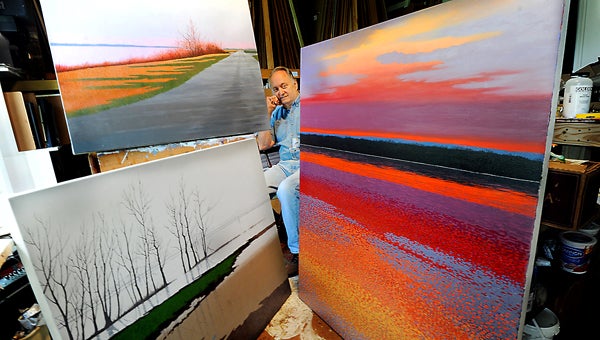Is Pilgrimage addressing changing face of tourism?
Published 11:55 pm Thursday, March 15, 2018
If you have any doubts about the changing face of tourism, you might pay attention to what a recent day-tripper had to say about Natchez.
Reporter Katie Eubanks recently traveled to Natchez and recounted her trip to her readers in Jackson.
Eubanks came to Natchez to celebrate with fellow Clarion-Ledger writer Billy Watkins, who recently received the Richard Wright Literary Excellence Award at the Natchez Literary and Cinema Celebration.
As you might imagine, Eubanks visited many of the regular local tourist sites, including the Turning Angel, Historic Jefferson College and the Mississippi River.
What she didn’t visit were any historic houses.
“I’ll be honest, I‘m not sure how I feel about plantation tourism, so I avoided it altogether. (It’d depend on how the history is presented and where the admission fee goes.),” Eubanks wrote to readers.
In a subsequent interview, Eubanks said she decided to avoid the tours altogether during her trip, recognizing the tendency for house tours to tell one side of the Antebellum story.
For Eubanks, the story matters —matters more than the building and its contents.
Turns out Eubanks is not alone. Recent studies, as published by the Journal of Heritage Tourism, write of an “increasing pressure” to tell a more inclusive story, due in part to a more sophisticated understanding of slave life, helped along by movies such as “Twelve Years a Slave” and other presentations on television and other mass media.
“There is now greater social activism in pulling back the cover of ‘moonlight and magnolias’ representations of plantation life to reveal the role of racism, white supremacy and slavery in driving the Old South and the Civil War,” the journal published in 2016.
Of course, Eubanks doesn’t represent every tourist who comes to Natchez. Many still come to get the “Gone with the Wind” version that comes with big, white-columned mansions in a bucolic landscape.
Interestingly, research is uncovering how manufactured that white-columned version of the South really is — that mansions such as Melrose and Magnolia Hall were, in fact, not white columned.
The overwhelming popularity of the Civil Rights Museum in Jackson may be another indication of the increasing importance of telling the unvarnished truth about the slavery and the South.
When the museum opened in Jackson on Dec. 9, tourism officials projected 180,000 visitors in the first year.
The Clarion Ledger reports that If current attendance rates hold, the museum, which focus on the years following the Civil War, could see up to 300,000 visitors in 2018.
School groups are signing up faster than museum organizers can accommodate, said Katie Blount, director of the Mississippi Department of Archives and History.
Of the many civil rights museums in the South, only the National Civil Rights Museum in Memphis saw more than 300,000 visitors. The National Museum of African American History in Washington, D.C., saw more than 2.3 million visitors in 2017.
There is little doubt more and more tourists are looking for a more complete history of the South.
With another Spring Pilgrimage underway, the question is whether local organizers are paying attention.
Ben Hillyer is the news editor of The Natchez Democrat. He can be reached at 601-445-3549 or by email at ben.hillyer@natchezdemocrat.com.



